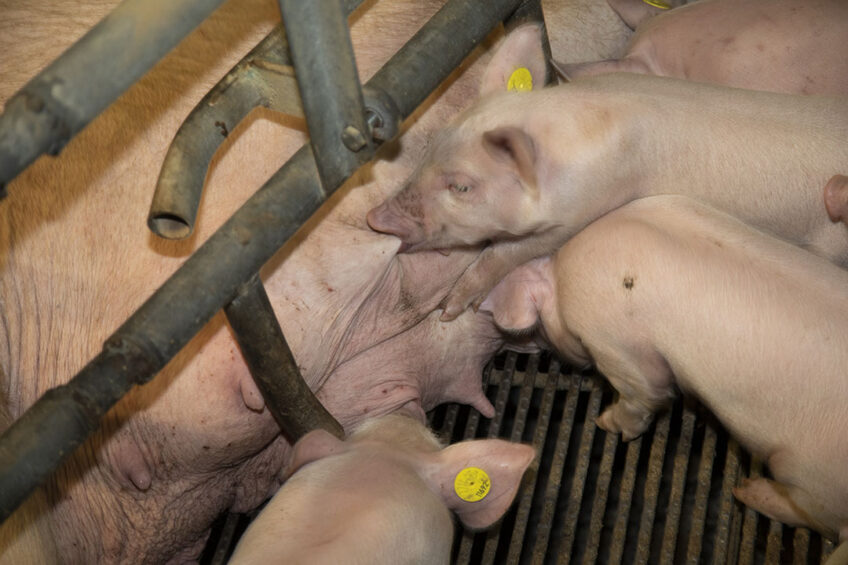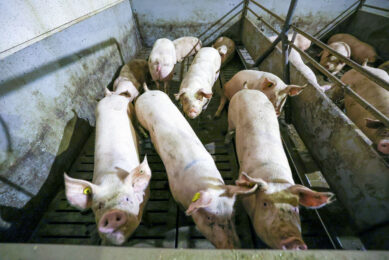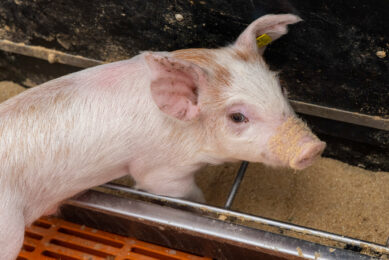Optimising sow and pre-weaning piglet performance

Better targeted nutrition for gilts and sows can play a major role in enhancing piglet survival and ongoing fertility. That was the key message in an online Pig Forum held last week in the United Kingdom.
The online forums are being held in years that the biennial British Pig and Poultry Fair does not physically take place. This session zoomed in on “Optimising sow and pre-weaning piglet performance.” Other sessions this week, also covered for Pig Progress, looked at challenges for swine producers in the years ahead and innovations in the UK pig market.
Bodyweight loss for sows during lactation
Chris Opschoor, feed group manager at breeding company Topigs Norsvin, said research has shown that if a gilt loses more than 12% of her bodyweight during lactation she will have 2.2 fewer piglets born in the next litter: “This is low hanging fruit – if we’re able to manage this it will have a big positive impact.”
Opschoor added that both body weight development during gestation and body weight loss during lactation have a big impact on follicle development and therefore on embryo quality and eventually on piglet vitality.
He had 3 take-home messages for producers:
- Improve body weight development of sows to support litter quality starting with the gilts;
- Limit weight losses during lactation, especially first priority sows. Lysine levels are dependent on sow feed intake and younger sows have lower feed intake so use a higher lysine: energy ratio;
- Prioritise stimulation of feed intake in modern sows – adapt feed formula to minimise internal heat production and maximise intake.
“An optimal diet for maximum performance is not the cheapest diet,” he stressed.
Smaller piglets with a low chance of survival
Dr Steve Jagger, ABN pig nutritionist, said that while litters had increased by 0.3 pigs per litter over the past 10 years, it had led to a reduction in average birth weight, a higher proportion of smaller piglets with a lower chance of survival, reduced colostrum intake per piglet and an increase in piglet losses.
Dr Jagger said increased nutrients were required to maintain condition. If nutrient intake was inadequate, it could lead to a loss of protein, fat and minerals, an increase in the interval between weaning and service and a reduction in the size of the next litter.

Causes of pre-weaning mortality in piglets
Kristian Volshøj, technical manager at AB Neo, spoke of research work involving post mortem examinations on 1,364 farms (50 piglets per herd). This showed that 68% of piglets were dying in the first 4 days of life, compared with 21.7% that died between 5-12 days and just 10.5% that lost their lives between 13 days and weaning. Nearly half of the losses (46.6%) were due to crushing, followed by being weak at birth (18.5%) and hunger (17.7%).
Volshøj said it was essential piglets received a good colostrum intake – they should be with own mum for 12 hours before moving. However, waiting too long thought led to higher mortality rates. Piglets were ready for cross-fostering when the umbilical cord was dry.
One option was to introduce split-suckling, which helped ensure sufficient colostrum intake in large litters. It confines the largest piglets in the litter in the creep for a maximum of 45 minutes to allow the 10-12 smallest piglets in the litter access to the udder. It should be done 1-2 times on the first day before cross-fostering.

Read also: Improving the chances of piglet survival
Commenting on piglet mortality on the farrowing crate, he described it as “the climate crisis”. It was vital, he said for piglets to be taught to stay in the piglet corner: “Piglets must spend energy on suckling instead of heat production. When too warm or cold the piglets go to the sow,” he said.











